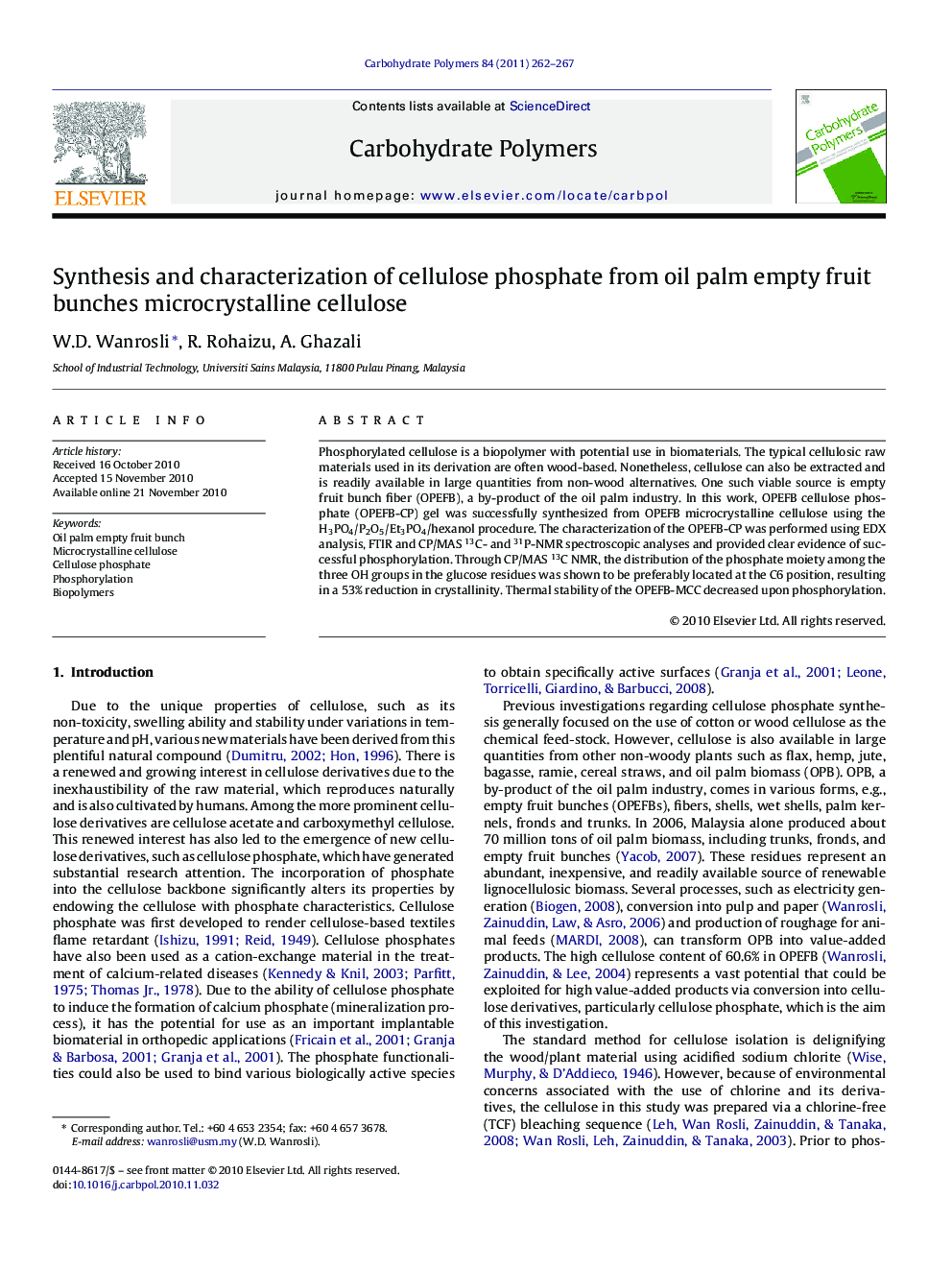| Article ID | Journal | Published Year | Pages | File Type |
|---|---|---|---|---|
| 10604658 | Carbohydrate Polymers | 2011 | 6 Pages |
Abstract
Phosphorylated cellulose is a biopolymer with potential use in biomaterials. The typical cellulosic raw materials used in its derivation are often wood-based. Nonetheless, cellulose can also be extracted and is readily available in large quantities from non-wood alternatives. One such viable source is empty fruit bunch fiber (OPEFB), a by-product of the oil palm industry. In this work, OPEFB cellulose phosphate (OPEFB-CP) gel was successfully synthesized from OPEFB microcrystalline cellulose using the H3PO4/P2O5/Et3PO4/hexanol procedure. The characterization of the OPEFB-CP was performed using EDX analysis, FTIR and CP/MAS 13C- and 31P-NMR spectroscopic analyses and provided clear evidence of successful phosphorylation. Through CP/MAS 13C NMR, the distribution of the phosphate moiety among the three OH groups in the glucose residues was shown to be preferably located at the C6 position, resulting in a 53% reduction in crystallinity. Thermal stability of the OPEFB-MCC decreased upon phosphorylation.
Keywords
Related Topics
Physical Sciences and Engineering
Chemistry
Organic Chemistry
Authors
W.D. Wanrosli, R. Rohaizu, A. Ghazali,
